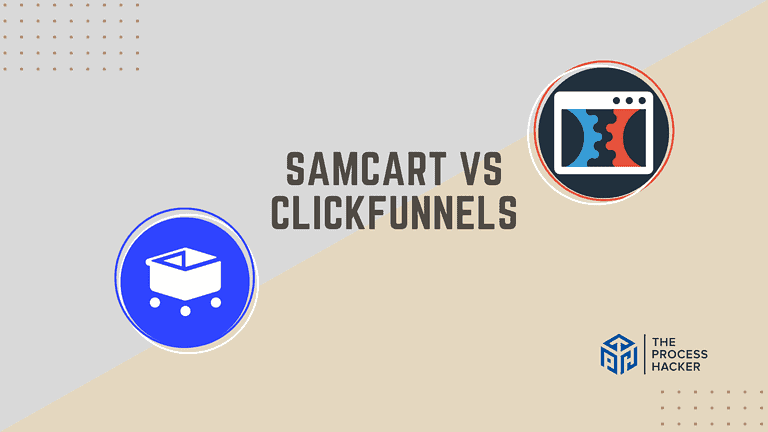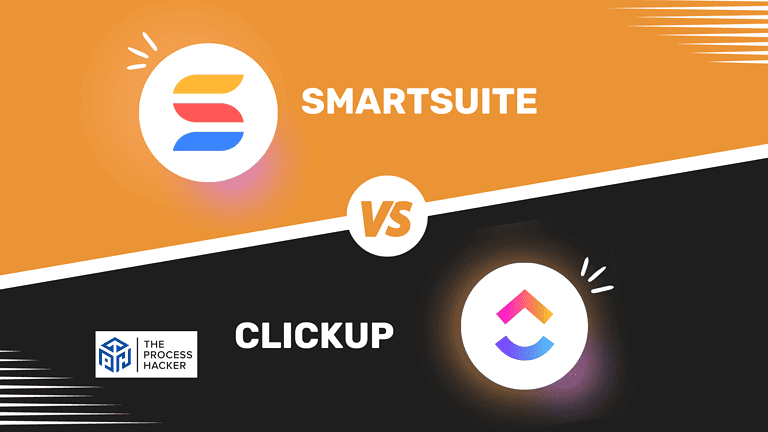Lean Principles: 5 Keys to Reducing Waste
“If you always do what you always did, you’ll always get what you’ve always got.”
Henry Ford, the founder of the Ford Motor Company.
Are you tired of feeling overwhelmed and burned out as an entrepreneur? Do you often find yourself struggling to keep up with the ever-changing market demands and fast-paced industry trends?
Well, my friend, don’t lose hope just yet. In this blog post, we’ll explore the world of Lean Principles, which has revolutionized how businesses operate and helped entrepreneurs like you achieve more with less.
So, prepare to learn about these powerful principles that are taking the business world by storm.
By the end of this post, you will not only have a clear understanding of Lean Principles but also how they can benefit your business in countless ways. So, let’s jump right in!
What are Lean Principles & Lean Thinking?
Lean is a business strategy that aims at improving workplace efficiency by eliminating waste from a company’s operations. It involves a lean management system that systematically evaluates every business process to pinpoint and eliminate unnecessary steps, ensuring that value-creating steps occur. This method not only reduces costs but also enhances the quality of the end products and heightens customer satisfaction.
Adopting a lean mindset is pivotal—it’s not merely about cutting waste but about fostering a culture that prioritizes continuous improvement. Lean project management ensures a smooth flow of processes, which is essential for maintaining efficiency and quality. These elements help companies remain competitive in a swiftly evolving marketplace.
Successful implementation of lean principles demands discipline and commitment, urging teams to persistently seek out inefficiencies and address them. This strategic approach to lean thinking is integral to developing operations that are both efficient and adaptable, providing a substantial edge in today’s dynamic business environment.
Origins of the Lean Principles
In 1913, Ford developed the assembly line method of manufacturing for the automobile in Highland Park, Michigan. This innovation radically transformed production, allowing for the creation of goods quickly, efficiently, and in much larger quantities. Considered the “Father of Lean Manufacturing,” Ford implemented several principles later known as Lean.
In the 1950s, an engineer from rival Toyota, Taiichi Ohno, built upon Ford’s ideas with other executives. They made systematic changes to the automobile assembly process that resulted in the Lean Principles, which allowed for more flexibility in the types of cars produced without significant efficiencies in the process.
The improvements also emphasized the worker’s role in solving problems. Thus, management empowered workers at all levels to reduce waste and improve operations.
How Can Lean Benefit Your Business?
Implementing the five fundamental lean principles can improve efficiency, reduce costs, increase productivity, and improve customer satisfaction. This approach involves continuous improvement, waste reduction, and process optimization to ensure that every aspect of your business works optimally.
By embracing lean, businesses can identify and eliminate sources of waste, streamline operations, and create a culture of continuous improvement. This not only helps them achieve their business goals but also leads to increased employee satisfaction.
Therefore, implementing lean principles is a priority if you want to improve your business’s overall health principles.
What are the Five Key Lean Principles?
However, the methods have recently made their way into many types of businesses and management. The five Lean principles derive from two high-level principles:
- Continuous Improvement: Anyone involved is empowered to regularly improve the system or process.
- Respect for People: Customers and workers should be treated well. Customers determine what gets produced, and workers are immediately responsible for dealing with systemic issues.
In “The Machine That Changed the World,” Womack and Jones defined the five principles of Lean as follows: Define Value, Map the Value Stream, Create Flow, Use a Pull System, and Pursue Perfection.
#1) Define Value
Value is defined by the customer’s requirements for a specific product or service.
When defined economically, value is the amount the customer is willing to pay for the product or service. However, customer value can be more than just a dollar value, as you can still provide a lot of value without taking payment.
For example, on YouTube, a viewer does not have to pay money to watch a video but will pay their time and attention, which in turn generates ad revenue for the creator.
In lean principles, value is defined by determining the customer’s needs from their perspective. The goods and services provide a solution to the customer’s needs. Customer needs can be identified through discussions, soliciting feedback, conducting focus groups, listening to social media, or doing market research. Thus, the unique value of the products or services needs to be determined.
Ask Yourself:
- What are the needs of your customers?
- Why do they need it?
- How does your product or service help the customer solve a problem in their life or work?
- Why will the customer choose your product or service over that of your competitors?
#2) Map the Value Stream
Mapping the value stream involves tracing and examining the specific actions needed to produce a product or service.
The lean principle of mapping the value stream follows the process of creating the product or service. One way to “map the value stream” is to create a process map, which is a tool that visually describes how value flows through the organization. The process map shows:
- The flow of materials and information,
- Tasks associated with a process,
- Required decisions along the way, and
- Relationships between the process steps.
Ask Yourself:
- What are the steps, decision points, and relationships in the process for your deliverable, product, or service?
- Who is responsible for the completion of each part of the process?
Example: Value Stream of Cake Shop
For example, the process map below shows the cake-making process. It assumes that all the ingredients are available, so the process starts when the order arrives and ends when the cake is delivered to the customer.
#3) Create Flow
Flow is the continuous, progressive addition of value to your product or service.
In lean principles, value is added to the development of the product or service. Flow begins when there is a request from the customer and ends when the product or service is delivered to the customer. The process of value creation should ideally have no interruptions and the least amount of steps.
To create flow, you have to analyze the activities in your process based on value:
- Value Added: Activities that add something or make changes to a product or service for which the customer would be willing to pay.
- Required Non-Value Added: Activities that do not add value, but are necessary to make the product or service happen.
- Non-Value Added (Waste): Activities that do not add value and that the customer is not willing to pay.
We analyze the value stream to look for ways to improve efficiency and eliminate waste. Waste is the non-value added steps of the process. Waste is tough to recognize and comes in many forms: rework, over-production, periods of inactivity, underutilizing people, unnecessary motion, or excessive inventory.
Ask Yourself:
- What activities in your value stream are value-added?
- What activities in your value stream are non-value added?
- Are there ways to streamline the process?
- Can you eliminate the wasteful activities?
#4) Establish Pull
A pull system is a system in which value is added when a downstream process requests it or a product or service is created when a customer orders it.
In contrast, the lean principle of the pull system is a predictive system. A schedule or forecast dictates the production of products or services.
We analyze the process by working backward from the end of the value stream. The customer has requirements for when they need the product or service delivered; thus, they “pull” the value out of the value stream when required. The usage of a pull system de-emphasizes the idea of being ready for the customer, which in turn reduces the investment of resources and space in materials, production, and storage.
Ask Yourself:
- When does the customer need our product or service?
- Can you meet the customer delivery date?
- How can you streamline your process such that delivery occurs as close to the delivery date?
#5) Seek Perfection or Continuous Improvement
Seeking perfection is striving to implement lean principles for continuous process improvement at all organizational levels.
The last lean principle, seeking perfection, is the most important, as it guides each member and the organization as a whole. The organization can empower its employees, who, in turn, seek to continually improve in their roles while delivering products that satisfy the customer’s requirements.
Overall, this will foster learning and constant growth for every employee and the company as a whole.
Key Considerations for a Lean Organization
In the journey towards becoming a lean organization, you must recognize that every process in your operation has room for improvement. The goal isn’t only to identify inefficiencies but also to understand the underlying causes of waste.
Start by evaluating your current workflows and pinpointing areas where steps can be minimized or eliminated altogether. This approach not only streamlines operations but also enhances your team’s ability to adapt to changes quickly and efficiently.
It’s also crucial to foster a culture of continuous improvement among your team. Encourage every member to suggest ways to enhance processes, no matter how minor these improvements might seem.
This will not only improve productivity but also help to embed lean principles deeply into your organizational culture, ensuring that efficiency is continuously enhanced over time.
Taking it to the Next Level: How to Enhance Your Lean Journey
To truly take your lean implementation to the next level, consider integrating advanced data analytics into your processes. By leveraging data, you can gain deeper insights into where exactly your operations may lag and predict where issues are most likely to arise. This proactive approach allows for precision in streamlining operations and can significantly reduce waste before it even occurs.
Additionally, explore the integration of technology solutions or AI that automate repetitive tasks. Automation not only speeds up the process but also reduces the likelihood of errors, freeing up your team to focus on more strategic tasks that require human insight.
Alternatives to Traditional Lean Methods
While traditional lean methods focus on minimizing waste through continuous improvement and efficient process design, other strategies can complement or even enhance these efforts. For instance, adopting Agile methodologies can provide a more flexible approach to project management, allowing for faster adjustments and a more responsive approach to change.
Another alternative is to utilize Six Sigma techniques alongside lean principles. Six Sigma’s focus on reducing process variation and enhancing quality control can provide a systematic framework that supports your lean initiatives, ensuring that improvements are both sustainable and effective.
By considering these alternatives, you can develop a more robust strategy that not only focuses on reducing waste but also on improving overall operational quality and responsiveness.
Final Thoughts on Lean

Whether you’re a small startup or working in a large corporation, implementing Lean principles into your business is crucial for success in today’s fast-paced and ever-changing market.
As we’ve discussed, Lean is not just a methodology but a mindset that encourages continuous improvement and a culture of problem-solving. By adopting this approach, you will not only streamline your processes and reduce waste but also foster an environment of innovation and teamwork.
Don’t underestimate the power of small improvements – they can lead to exponential growth for your business. So don’t wait any longer; go forth and start applying Lean practices to your operations!
Embrace the concept of “less is more” and watch as your company flourishes with improved efficiency and profitability. Remember, Rome wasn’t built in a day, and neither will your Lean transformation. Still, with determination and dedication to continuous improvement, you will reap the benefits in the long run.
So take that first step towards embracing Lean – it may just be the key to taking your small business to new heights!








I like that you spent time working through the visual models to represent the parts of a process that we might not see. When we receive the ‘cake’ or the end product, it’s easy to gloss over the details that brought it all together. In this post you spent time on value and also eliminating waste in the process. Thank you!